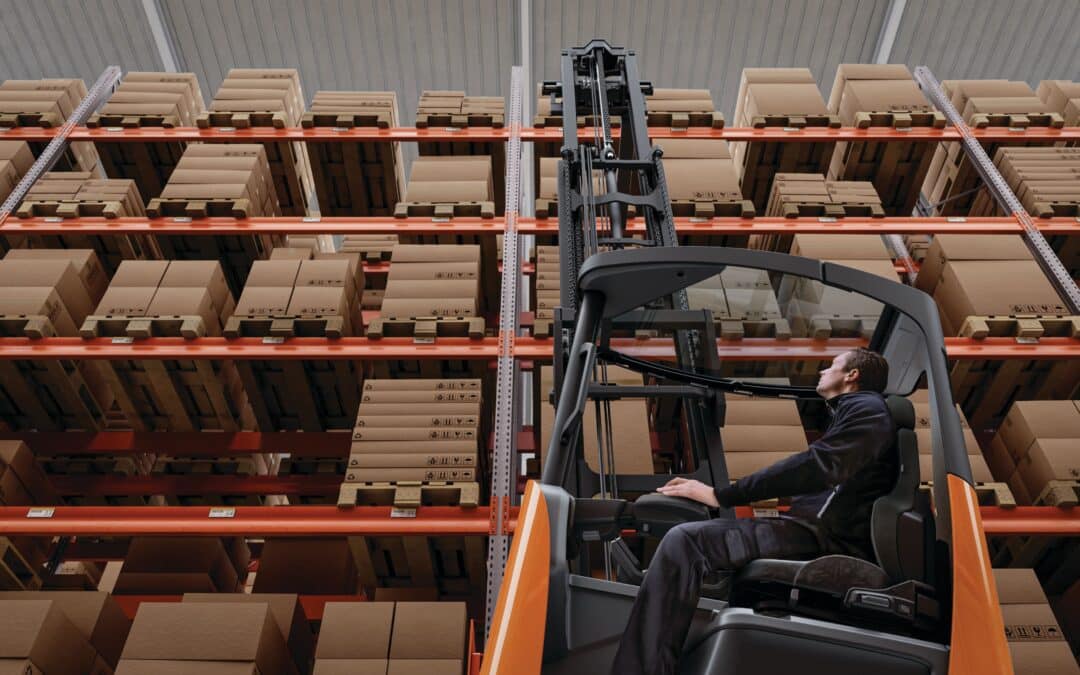In the dynamic world of material handling, forklifts are the workhorses that keep operations running smoothly. At the heart of these machines lies the forklift mast, upright structures that allow the operator to position and maneuver loads. They are integral to any forklift, consisting of a fork and an elevation mechanism. However, not all masts are created equal. There is a wide array of mast types, each designed to cater to specific operational needs.
Key Components of a Forklift Mast
Mast Cylinders: Hydraulic lift cylinders are the most important elements of a mast allowing the truck to lift and lower loads.
Carriage and Load Backrest: Part of the mast that holds and moves the load. It is connected to the mast cylinders allowing it to move up and down.
Rails: The vertical bars that ensure stability and provide strength to the mast. They are connected to the carriage and are what allow the truck to extend to its maximum fork height.
Overhead Guard: A protective shield that provides cover in case something falls while the forklift is being operated.
Four Main Mast Types
The four most common forklift masts are:
Single-stage (simplex) mast: This is the simplest and most economical type of mast. It has one mast channel that extends vertically from the foot of the forklift. It employs a fixed outer rail and a sliding inner rail. It can lift loads to a limited height, usually up to 15 feet, such as lifting a load on to a truck. It is suitable for applications where there is no need to stack loads or work in tight spaces. A simplex mast can offer more visibility for the operator.
Two-stage (duplex) mast: This type of mast has two sets of rails that extend vertically from the base of the forklift. The inner set can slide up and down along the outer set, allowing the mast to reach higher heights than a single-stage mast. Depending on size, it can lift loads up to around 20 feet. It is suitable for applications where there is moderate stacking or working in medium-height spaces, where loads can be double-stacked. Duplex masts may have a free lift cylinder which can limit the range a load can be lifted.
Three-stage (triplex) mast: This is now the most common and versatile type of mast and has three sets of rails that extend vertically from the foot of the forklift, lifting loads up to 30 feet. The inner and middle sets can slide up and down along the outer set, allowing the mast to reach heights that make them popular in warehouses. These are often found on reach trucks.
Quad mast: This type of mast has four sets of rails that provide four tiers of lifting, up to 50 feet. The inner, middle and outer sets can slide up and down along the outermost set, allowing the mast to reach the highest heights possible for a forklift. This is suitable for applications such as high stacking warehousing or working in other very high-height spaces. One challenge with these forklifts is a more limited visibility.
Considerations When Choosing a Forklift Mast
To choose the best type of forklift mast for your application, you need to consider multiple factors.
The height of your warehouse and storage capacity in important. You need to make sure that the forklift mast can fit within the available space and safely handle the required height and weight without compromising its stability or performance. Another variable is the type of load, such as pallets or containers. Being aware of the various types of masts available and factors to consider when selecting one will make sure you are better prepared to select the optimal mast for your application.
The frequency and duration of your operations mean the forklift mast must be able to withstand the daily grind of the workload. The environment the mast will be used in is important. Outdoor applications may necessitate choosing a mast with weatherproofing features. Knowing all the applications as well as dimensions and required clearances will help you choose the appropriate mast.
There are budgetary considerations to be aware of. Mast price ranges depend on their size and capacity. More durable and reliable masts can mean lower maintenance and running costs.
As always, safety has to be taken into account. The more stable and secure a lifting mechanism is will help reduce the risk of accidents and injuries.
Find The Right Equipment
Forklift masts can come in multiple configurations with a variety of shapes, sizes, and capacities being available. The specific requirements of any application must be taken into consideration to ensure the relevant mast is chosen. Where will it be used? How will it be used? How often will it be used?
Choosing the correct mast for your specific set of operational circumstances means choosing efficiency and safety. Let our Shoppa’s experts help you pick out the right equipment for your business. Contact us today to learn more.


